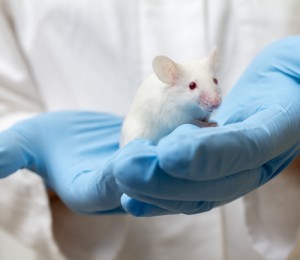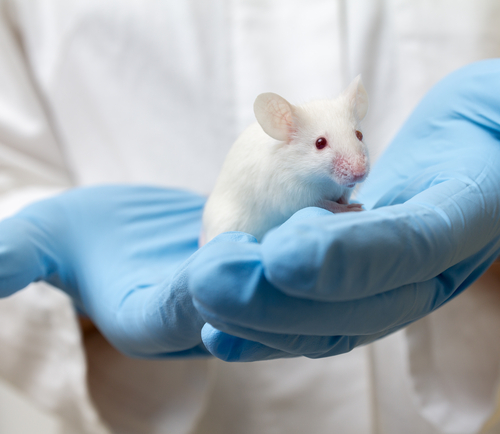 Researchers from the University of Alabama at Birmingham will begin a pioneering clinical trial in 2015 named “The repurposing of verapamil as a beta cell survival therapy in type 1 diabetes,” supported financially by a $2.1 million grant for three years from the Juvenile Diabetes Research Foundation International (JDRF). This trial is based on previous research work entitled “Preventing β-cell loss and diabetes with calcium channel blockers” published on Diabetes by Guanlan X and Junqin Chen, first co-authors from the group of Anath Shalev, M.D., director of UAB’s Comprehensive Diabetes Center and principal investigator of the verapamil clinical trial, where was shown that verapamil, a drug used to treat high blood pressure, irregular heartbeat and migraine headaches by blocking calcium channels, completely reversed diabetes in animal models.
Researchers from the University of Alabama at Birmingham will begin a pioneering clinical trial in 2015 named “The repurposing of verapamil as a beta cell survival therapy in type 1 diabetes,” supported financially by a $2.1 million grant for three years from the Juvenile Diabetes Research Foundation International (JDRF). This trial is based on previous research work entitled “Preventing β-cell loss and diabetes with calcium channel blockers” published on Diabetes by Guanlan X and Junqin Chen, first co-authors from the group of Anath Shalev, M.D., director of UAB’s Comprehensive Diabetes Center and principal investigator of the verapamil clinical trial, where was shown that verapamil, a drug used to treat high blood pressure, irregular heartbeat and migraine headaches by blocking calcium channels, completely reversed diabetes in animal models.
Diabetes is the seventh-leading cause of death in U.S. and increases the risk for heart attacks, blindness, kidney disease and limb amputation. Recent statistical analysis from the federal government reported that 12.3% of Americans 20 years and older have diabetes, either diagnosed or undiagnosed. Moreover, 37% have pre-diabetes, a condition described by higher-than-normal blood sugar levels, i.e., a 27% increase from ten years ago. According to a recent report in the Journal of the American Medical Association the increase in new cases has slowed in recent years, but overall the numbers remain high and are still increasing. In 2013, diabetes cost the nation $245 billion according to the American Diabetes Association report, i.e. a serious social and economical burden.
The researchers from UAB have shown that high blood glucose (sugar) levels induce the pancreatic beta cells (β-cells), the cells that produce insulin, to overproduce a protein called thioredoxin-interacting protein (TXNIP), in response to glucose. High levels of TXNIP induce β-cell apoptosis, i.e. death of the cells, and decrease the ability of the body to produce insulin, the hormone that controls blood sugar levels, contributing to the progression of diabetes. Notably, the authors discovered that the calcium channel blocker verapamil, used as antihypertensive drug, reduced TXNIP expression and β-cell apoptosis, increasing the production of endogenous insulin levels, and protected mice from diabetes.
“We have previously shown that verapamil can prevent diabetes and even reverse the disease in mouse models and reduce TXNIP in human islet beta cells, suggesting that it may have beneficial effects in humans as well,” said Dr. Anath Shalev, in the press release. “That is a proof-of-concept that, by lowering TXNIP, even in the context of the worst diabetes, we have beneficial effects. And all of this addresses the main underlying cause of the disease — beta cell loss. Our current approach attempts to target this loss by promoting the patient’s own beta cell mass and insulin production. There is currently no treatment available that targets diabetes in this way,” added Dr. Anath Shalev.
For this clinical trial, 52 people age 19 to 45 will be recruited after three months of receiving the diagnosis of type 1 diabetes during early 2015. The patients will be randomized in two groups, the overapamil or the placebo-treated group, and will receive the treatment for one year while still using the insulin pump therapy. Additionally, the patients will receive a continuous glucose monitoring system for them to measure blood sugar 24 hours a day, 7 days a week.
“Currently, we can prescribe external insulin and other medications to lower blood sugar; but we have no way to stop the destruction of beta cells, and the disease continues to get worse,” said Fernando Ovalle, M.D., director of UAB’s Comprehensive Diabetes Clinic and co-principal investigator of the study. “If verapamil works in humans, it would be a truly revolutionary development in a disease affecting more people each year to the tune of billions of dollars annually,” concluded Dr. Ovalle, who helped in the development of the clinical trial, and will supervise clinical aspects of the study, including recruitment of subjects, treatment, testing, acquisition, and analysis of the data.
It has been known for a long time by researchers that pancreatic β-cells are crucial for the development of type 1 and type 2 diabetes. In both types of diabetes, these cells start to die through a programmed cell death, i.e. apoptosis, but the patients still had a measurable amount of beta cell function. However, this remaining function was not sufficient to maintain normal blood sugar levels. Importantly, the exact molecular triggers for the death process were unknown.
Dr. Shalev said that the possibility of beta cells to survive and even regenerate or recover their function ,thus increasing beta cell mass, provides an appealing alternative to the transplantation procedure, which has been very difficult and challenging.
“A first step towards that goal may be the ability to improve the survival and functioning of a person’s beta cells shortly after diagnosis,” said Andrew Rakeman, Ph.D., JDRF director of Discovery Research. “This study represents the result of years of investment in basic research at JDRF. We are now at the stage of translating basic laboratory research into potential significant new therapies for type 1 diabetes and we’re excited to support Dr. Shalev’s team to test this concept in a study of people with type 1 diabetes. Finding a therapy to improve beta cell survival and functioning would put JDRF’s efforts to find a cure on a new trajectory.”
“This trial is based on a well-known blood pressure medication that has been used for more than 30 years and is unlikely to have any severe side effects,” said Dr. Shalev “This study is also backed by a lot of strong mechanistic data in different mouse models and human islets, and we already know the mechanisms by which verapamil acts. Finally, unlike any currently available diabetes treatment, the trial targets the patient’s own natural beta cell mass and insulin production.”
Importantly, the verapamil trial does not include the use of immunosuppressive or immune modulatory drugs, which often induce severe side effects, which is an enormous advantage to the majority of type 1 diabetes trials.
“While in a best-case scenario, the patients would have an increase in beta cells to the point that they produce enough insulin and no longer require any insulin injections — thereby representing a total cure — this is extremely unlikely to happen in the current trial, especially given its short duration of only one year,” said Dr. Shalev.
“We know from previous large clinical studies that even a small amount of the patient’s own remaining beta cell mass has major beneficial outcomes and reduces complications,” stated Dr. Shalev. “That’s probably because even a little bit of our body’s own beta cells can respond much more adequately to very fine fluctuations in our blood sugar — much more than we can ever do with injections or even sophisticated insulin pumps.”
The UAB’s Comprehensive Diabetes Center, together with the Alabama Drug Discovery Alliance, established a collaborative agreement with UAB’s School of Medicine and Southern Research Institute to actively discover and develop small therapeutic molecules that inhibit TXNIP production, protect the beta cells, and treat diabetes.
“We want to find new drugs — different from any current diabetes treatments — that can help halt the growing, worldwide epidemic of diabetes and improve the lives of those affected by this disease,” said Dr. Shalev. “Finally, we have reason to believe that we are on the right track.”concluded Dr. Shalev.
Finally, Dr. Shalev highlighted that the research performed until this stage that led to the clinical trial would not have been possible without the existence of the UAB Comprehensive Diabetes Center and the continued support of the community.


